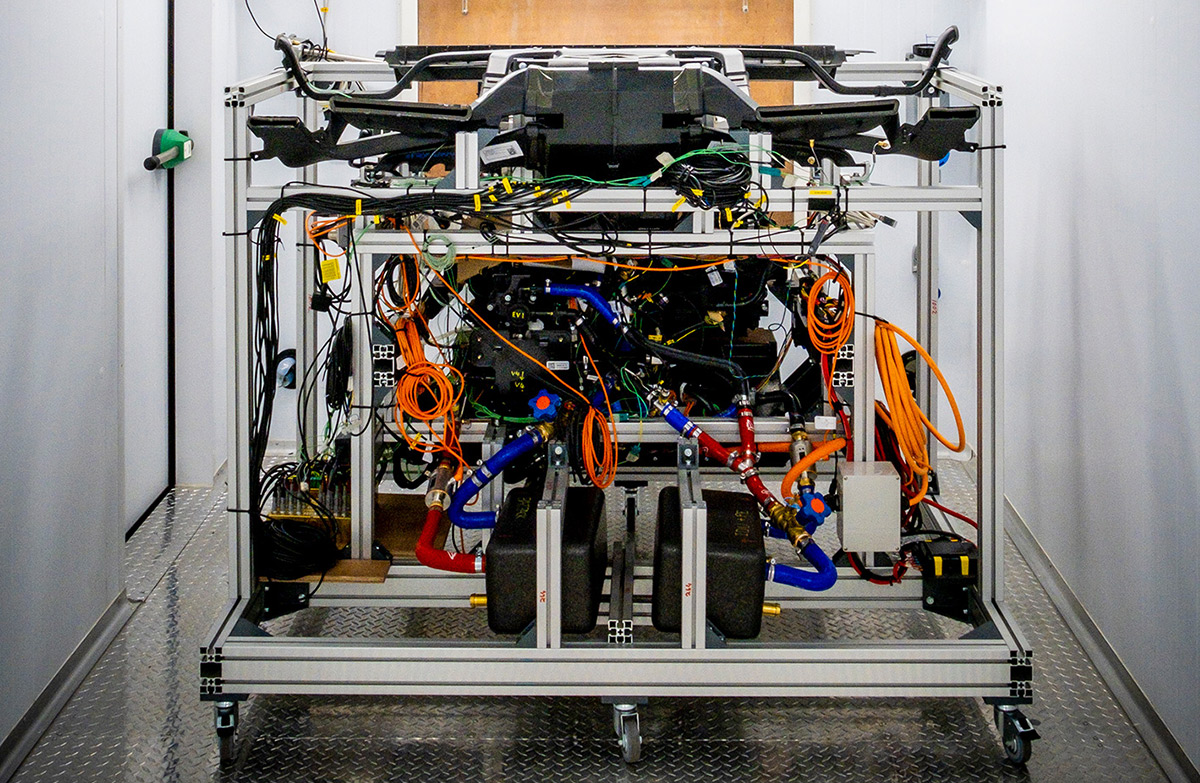Approach
HORIBA MIRA’s VTEOS facility enables much earlier development of thermal systems at a fraction of the traditional cost and time. Rather than waiting for expensive prototype vehicles to be built, safe, calibrated and fault-free, HORIBA MIRA customers can simply deliver a box of thermal components for HORIBA MIRA engineers to assemble, instrument, and install onto a modular trolley system.
This system is then subject to appropriate hot/cold air flow and component heat rejection (i.e., battery/motor heat) in the VTEOS to emulate different driving scenarios. This enables the rapid identification of performance issues, component compatibility barriers, development of control logic, and validation of warranty conditions, all before a prototype vehicle’s wheels start turning.
With this approach, OEMs can begin physical testing much earlier in the vehicle programme, with far lower programme risk. It eliminates the time and cost associated with preparing a mule vehicle for thermal development, while dramatically reducing operational costs compared to a traditional full-scale climatic wind tunnel.
The controlled, repeatable environment of the VTEOS and the accessibility of the trolley system provides an ideal platform for de-bugging issues, swapping components for comparison and, crucially, correlating simulation models. This, in turn, establishes confidence in virtual models at an early stage, allowing the simulation to be exploited far more effectively, with less reliance on physical testing, leading to a cheaper and more environmentally sustainable route to market.
Successes and benefits
VTEOS provides a fast and cost-effective springboard into physical testing long before a complete prototype vehicle is available. Its highlights include:
- A 70 per cent reduction in operational costs compared to climatic wind tunnel testing, saving the customer both money and C02 footprint.
- Significantly shorter setup times and lower costs than building and preparing a mule vehicle.
- Easy access to components on the trolley for rapid de-bugging and instrumentation.
- A faster route to correlation, allowing greater reliance on simulation, which further reduces the costs associated with physical testing.
- Hardware-in-loop (HiL) sandbox environment for thermal control logic/strategy development.
VTEOS is an extremely powerful tool for linking simulation with physical testing. It’s a fast and cost-effective way of establishing correlation and gaining confidence in the design, enabling engineers to get the most out of the simulation and have no nasty surprises towards the end of development.
Ben Gale, Solution Leader for Automotive Energy Efficiency HORIBA MIRA

